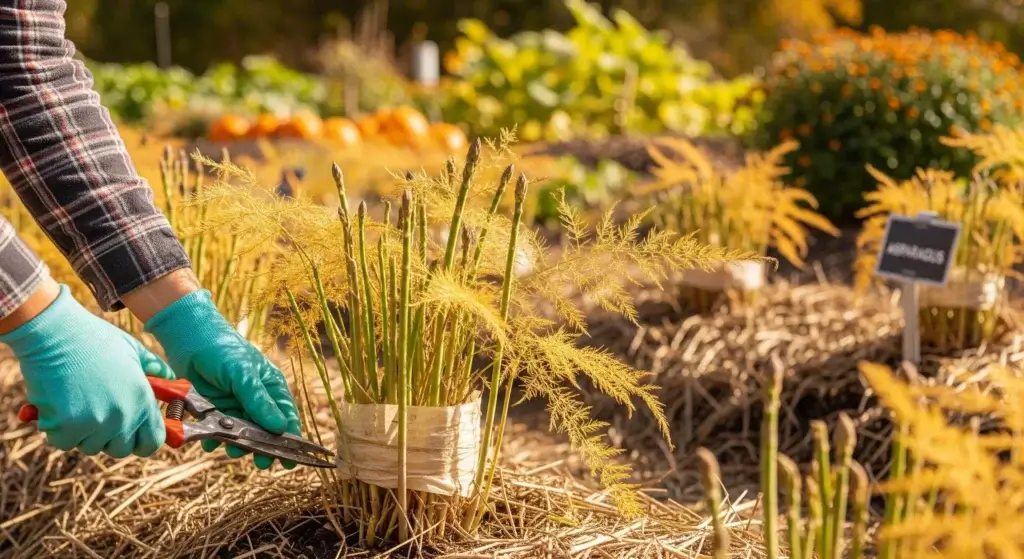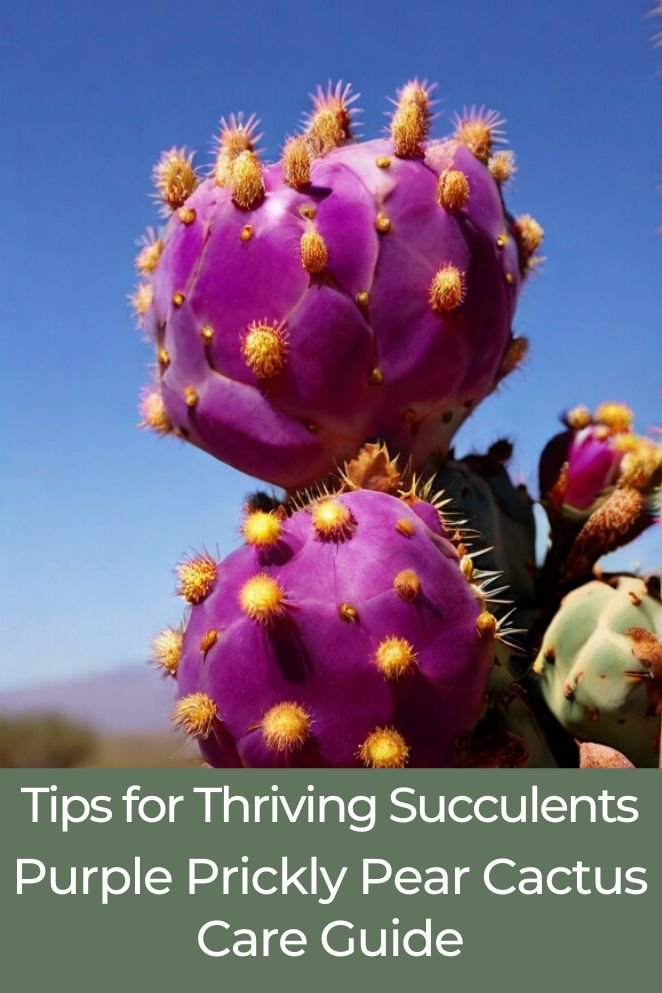
The purple prickly pear cactus, also known as Opuntia violacea, is a stunning and low-maintenance succulent that adds a touch of desert beauty to any garden.
With its distinctive purple pads and vibrant yellow flowers, this cactus is a unique and eye-catching addition to arid and semi-arid landscapes.
In this article, we will explore the plant profile of the purple prickly pear cactus, its origin, and characteristics, different varieties and sizes, and provide a comprehensive guide to its care and maintenance.
Plant Profile of Purple Prickly Pear Cactus
Origin and characteristics
The vibrant purple prickly pear cactus traces its roots to the arid landscapes of the American Southwest and Mexico.
As a proud member of the Opuntia genus, recognized for its flat, fleshy pads and striking flowers, this cactus adds a touch of uniqueness to its native habitats.
What truly distinguishes this species is the distinct purple hue of its pads, setting it apart from other prickly pear varieties.
This feature makes it a sought-after choice for xeriscapes and gardens designed to withstand drought conditions.
- Read also: Mastering Dragon Wing Begonia Care
- Read also: A Guide to Dracaena Colorama Care
Different varieties and sizes
Within the realm of purple prickly pear cacti, diversity reigns.
Various varieties showcase unique characteristics and growth patterns.
Some may boast rounded pads, while others exhibit a more elongated form.
This diversity extends to size as well, offering options ranging from compact plants suitable for containers to larger specimens that command attention with their towering height and width.
The versatility of these cacti makes them adaptable to different garden settings and preferences.
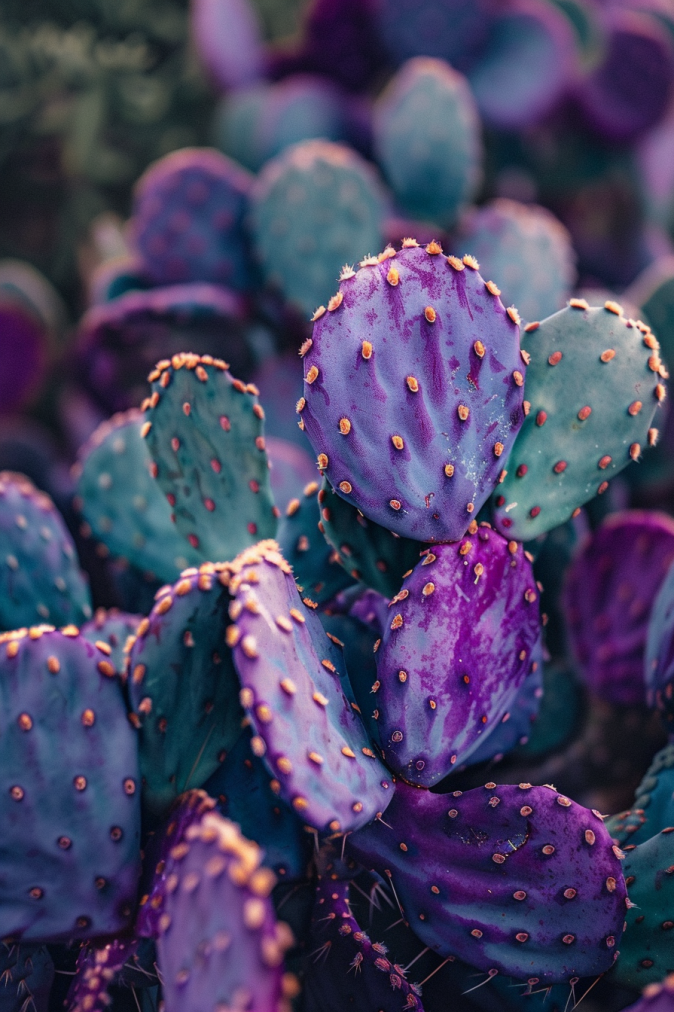
Purple Prickly Pear Cactus Care
Caring for your purple prickly pear cactus involves a thoughtful approach to light, water, soil, temperature, and fertilization.
Here’s a comprehensive guide to ensure your cactus thrives in its vibrant, desert-inspired glory:
Light
Purple prickly pear cacti thrive in bright, direct sunlight, making placement in a sunny spot crucial.
Aim for at least six hours of direct sunlight daily, although in hot climates, providing some afternoon shade can shield the cactus from intense heat and potential sunburn.
Water
The purple prickly pear cactus boasts impressive drought tolerance, preferring infrequent but deep watering sessions.
During the growing season, which typically spans spring to fall, water the cactus when the top inch of soil feels dry to the touch.
In winter, reduce watering to mimic the plant’s natural dormancy period.
Soil and drainage
To ensure the health and vitality of your purple prickly pear cactus, prioritize soil with excellent drainage.
Plant them in a specialized cactus mix or enhance regular potting soil with sand or perlite to promote proper drainage.
In outdoor gardens, raised beds or mounds can prevent water from accumulating around the cactus roots, guarding against rot and other moisture-related issues.
Temperature and humidity
These cacti are well adapted to hot, arid climates and can tolerate a wide temperature range.
However, they are sensitive to frost and freezing temperatures, so provide protection during colder months.
In terms of humidity, low levels are preferred, along with adequate air circulation to prevent fungal diseases.
Fertilization
Purple prickly pear cacti are considered light feeders and typically do not require frequent fertilization.
However, if you opt to fertilize, use a balanced, water-soluble fertilizer diluted to half-strength during the growing season.
Refrain from fertilizing during the winter dormancy period, as the cactus’s metabolic activity slows down.
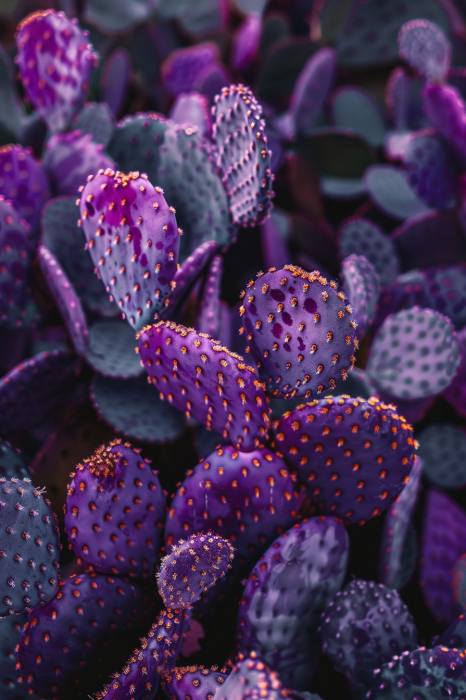
Pests and Diseases
Pests and Diseases of the Purple Prickly Pear Cactus: A Guide to Protection
While known for its low-maintenance nature, the purple prickly pear cactus can still be susceptible to some pests and diseases.
Here’s a breakdown of the most common:
Pests
- Mealybugs: These white, cottony masses suck sap from the cactus. Treat with neem oil spray, insecticidal soap solution, or rubbing alcohol on a cotton swab.
- Scale insects: These small, armored bumps also feed on sap. Use horticultural oil spray or scrape them off individually.
- Spider mites: Tiny, web-spinning creatures that cause yellowing and stippling on leaves. Treat with insecticidal soap or neem oil spray.
Diseases
- Fungal diseases: Overwatering can lead to fungal problems like stem rot and cactus rust. Ensure proper drainage, avoid overwatering, and remove infected parts.
- Botrytis blight: This gray mold thrives in humid conditions. Improve air circulation, remove infected parts, and use fungicide if necessary.
Other threats
- Cactus moth larvae: These caterpillars bore into the cactus pads. Handpick them or use biological control methods like Bacillus thuringiensis (Bt).
- Rodents: Squirrels and rabbits might nibble on pads. Protect your cactus with netting or fencing.
Prevention tips
- Regular inspection: Check your cactus weekly for signs of pests or diseases. Early detection is key!
- Quarantine new plants: Isolate new additions to prevent transferring pests or diseases.
- Maintain good cultural practices: Proper light, watering, and drainage are crucial for overall plant health and resistance.
- Encourage beneficial insects: Ladybugs and lacewings can help control pest populations naturally.

Propagation and Maintenance
Propagation
Purple prickly pear cacti can be propagated through two primary methods: pads or seeds.
To propagate from pads, allow the cut end to dry and form a callus for a few days before planting it in well-draining soil.
This process helps prevent rotting and promotes successful rooting.
Alternatively, seeds can be collected from ripe fruit and planted in a suitable growing medium following standard germination practices.
Maintenance
Routine maintenance is essential for keeping purple prickly pear cacti healthy and vibrant.
Occasional pruning may be necessary to remove dead or damaged pads and to maintain the desired shape of the plant.
Use caution when handling the cactus due to its spines, and consider wearing protective gloves to prevent injury.
Regular monitoring for pests and diseases ensures early detection and timely intervention, contributing to the overall well-being of the plant.
What Are The Benefits of Growing Purple Prickly Pear Cactus
Growing purple prickly pear cactus offers numerous benefits, both for the environment and for personal well-being.
Environmental benefits
Biodiversity champion
Purple prickly pear cacti play a crucial role in supporting biodiversity.
Their flowers provide nectar, attracting pollinators like bees and butterflies.
Additionally, the fruit serves as a food source for various wildlife, contributing to ecosystem health.
Water conservation
Known for their drought tolerance, these cacti require minimal water.
Choosing purple prickly pear cacti for xeriscapes and water-wise landscapes aids in water conservation, particularly in regions where water scarcity is a concern.
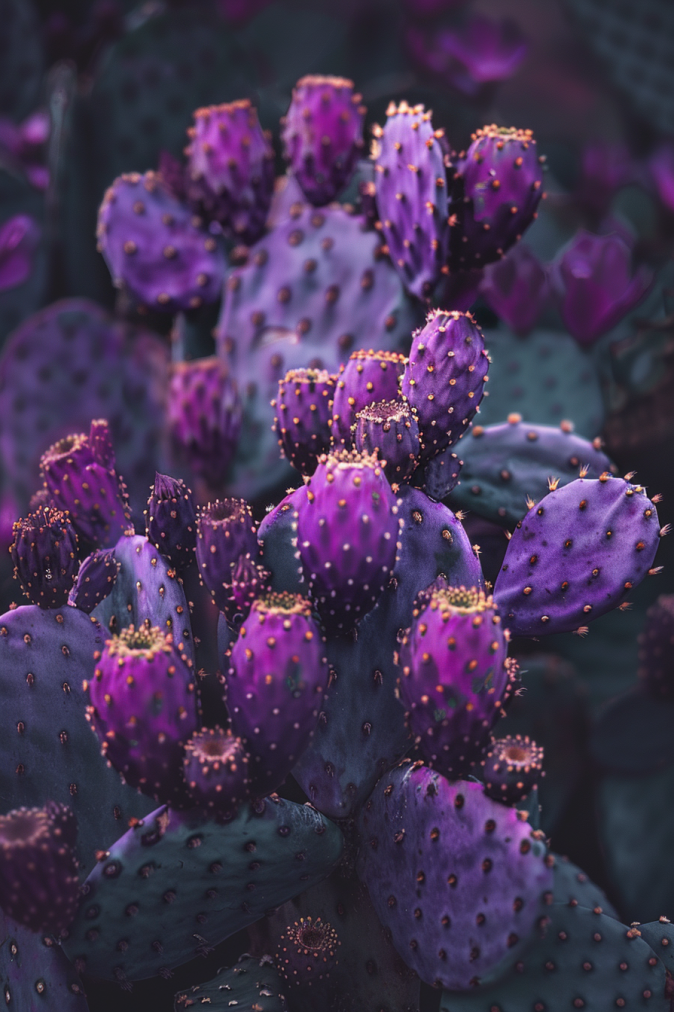
Personal well-being benefits
Nutritional value
rickly pear fruit and pads boast a nutritional profile rich in fiber, vitamins (such as vitamin C), minerals, and antioxidant compounds.
Consumption may offer benefits like weight management, blood sugar regulation, and liver health.
Skin and hair health
Studies suggest that the vitamin C and betalain pigments present in prickly pear may contribute to glowing skin and healthy hair.
Including this cactus in your diet could potentially enhance your overall skin and hair well-being.
Potential medicinal properties
Rooted in Mexican folk medicine, the prickly pear has been used to address various health issues, including ulcers and liver conditions.
Ongoing research continues to explore its potential medicinal properties, expanding our understanding of its health benefits.
Blood sugar management
Preliminary studies indicate that prickly pear consumption may have a positive impact on blood sugar levels, particularly in individuals with diabetes.
However, more research is essential to confirm and understand this effect fully.
Cholesterol management
Some research suggests that incorporating prickly pear into your diet may help lower total and LDL cholesterol levels, potentially reducing the risk of heart disease.
This cardiovascular benefit adds to the overall health advantages of consuming these cacti.
Hangover relief
Preemptive consumption of prickly pear cactus before alcohol intake has shown promise in reducing hangover symptoms.
These symptoms include nausea, anorexia, and dry mouth.
While further research is needed, this potential benefit adds a unique aspect to the advantages of growing purple prickly pear cactus.
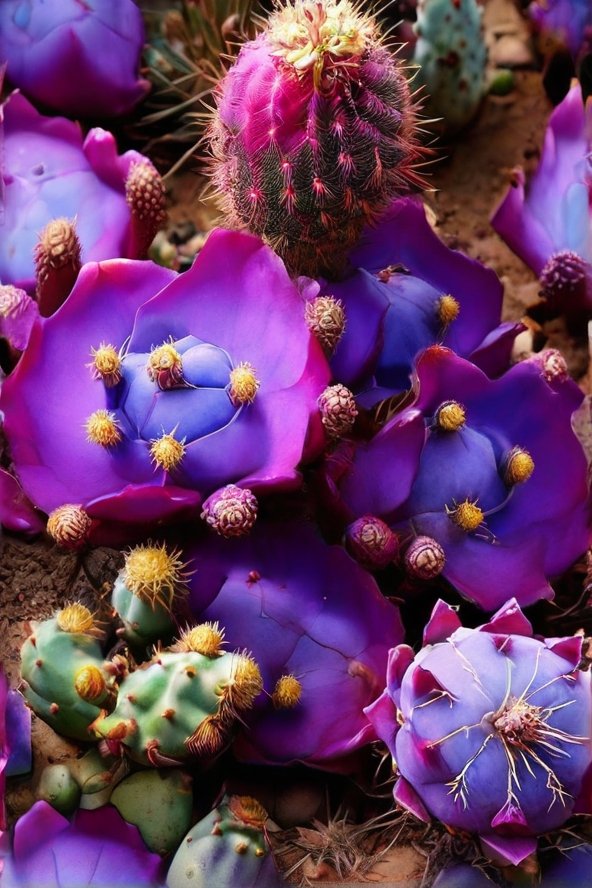
- Read also: Tips for Hawaiian Spider Plant Care
- Read also: The Essential Guide to Thriving Spider Plant Care Indoors
Conclusion
With its striking appearance and resilient nature, the purple prickly pear cactus can flourish in various garden settings.
By providing proper care and maintenance, you can revel in the unique beauty of this remarkable plant for years to come.
Whether you’re a seasoned cactus enthusiast or new to gardening, the purple prickly pear cactus makes a splendid addition to any water-wise landscape.
FAQs
Vibrant color, unique form, low-maintenance, potential for flowers, great beginner plant.
Bright, indirect sunlight for several hours daily. Avoid harsh afternoon sun.
Let the soil dry completely between waterings. Water deeply then wait again. Less water in winter, and more in the hot summer months.
Very little! Diluted, balanced fertilizer once during the growing season is enough.


